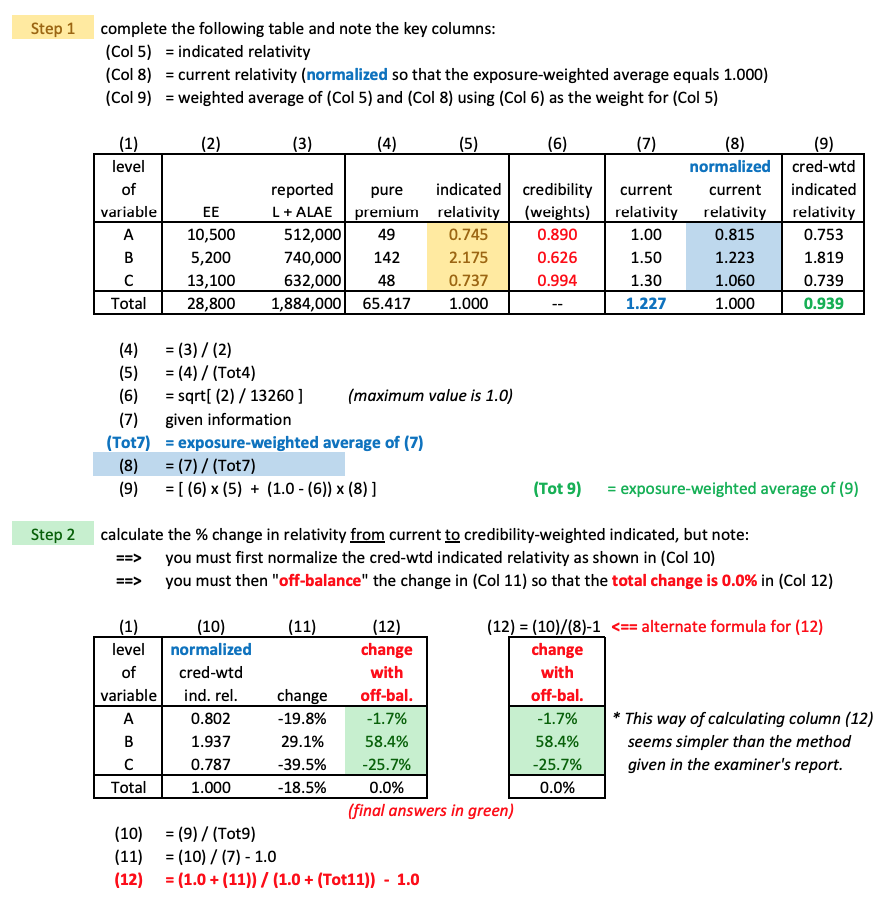Spring 2017 Q7
I don't understand how off balancing works.
First of all, why are we comparing the NOMRALIZED cred-wtd ind. rel. (10) to current relativity, which looks to have its base as level A (given that level A has relativity 1.00)? Why not compare (10) to (8)?
- As an aside, if the base is level A (again, given that level A has relativity 1.00, should we rebase the final relativities at the end of this question to level A again?) I saw a similar discussion post on this topic but I did not understand your answer.
Also, what exactly is the formula for column 12 doing and what do the values in column 12 mean? Are these relativities, but "adjusted" from the cred wtd indicated relativities so that the total can be 0? What is the final answer to this question, is it column 12?

Comments
A simple example that demonstrates the concept behind off-balancing is this:
In other words, the off-balance is just a factor that is applied to all relativities to bring the overall rate change back to where you want it.
Regarding this particular exam problem:
But let's rebase the relativities for illustration:
The exposure-weighted average of these = 1.247. Then comparing to the column (7) total, the off-balance is 1.227 / 1.247 = 0.984. If you now calculate the change in relativities using the rebased values we just calculated against the original relativities, then multiply by the off-balance of 0.983, then subtract 1.000 to get the change, you get:
Aside from minor rounding issues, this is the same answer as before.